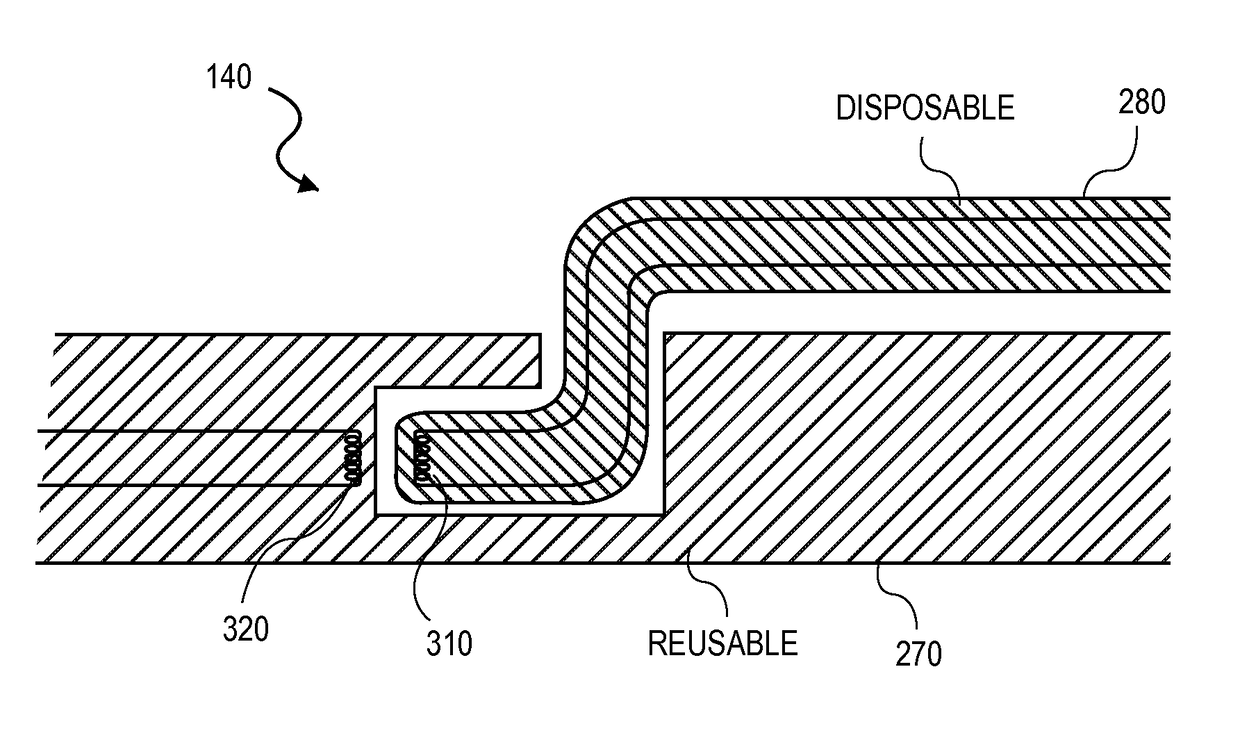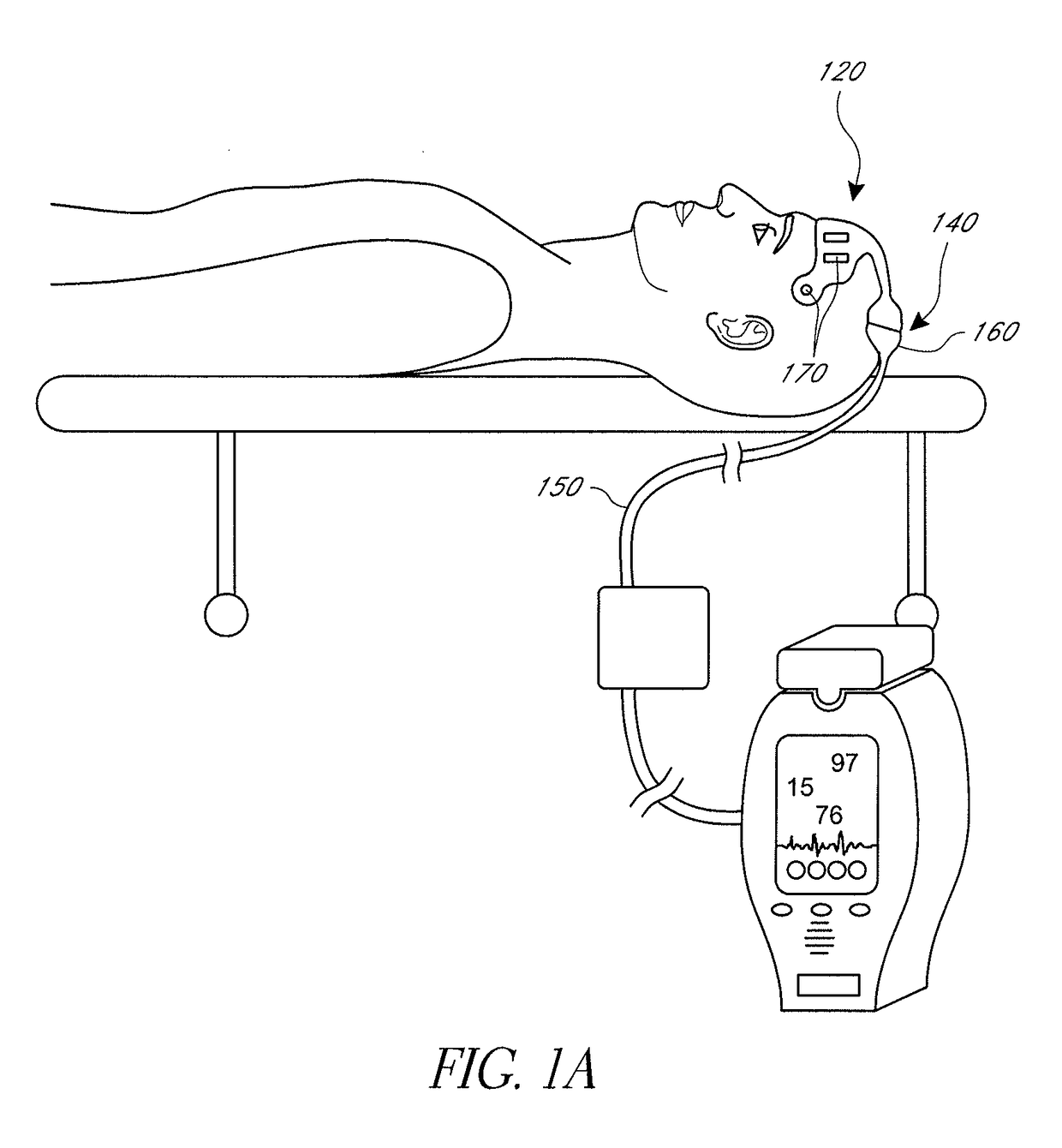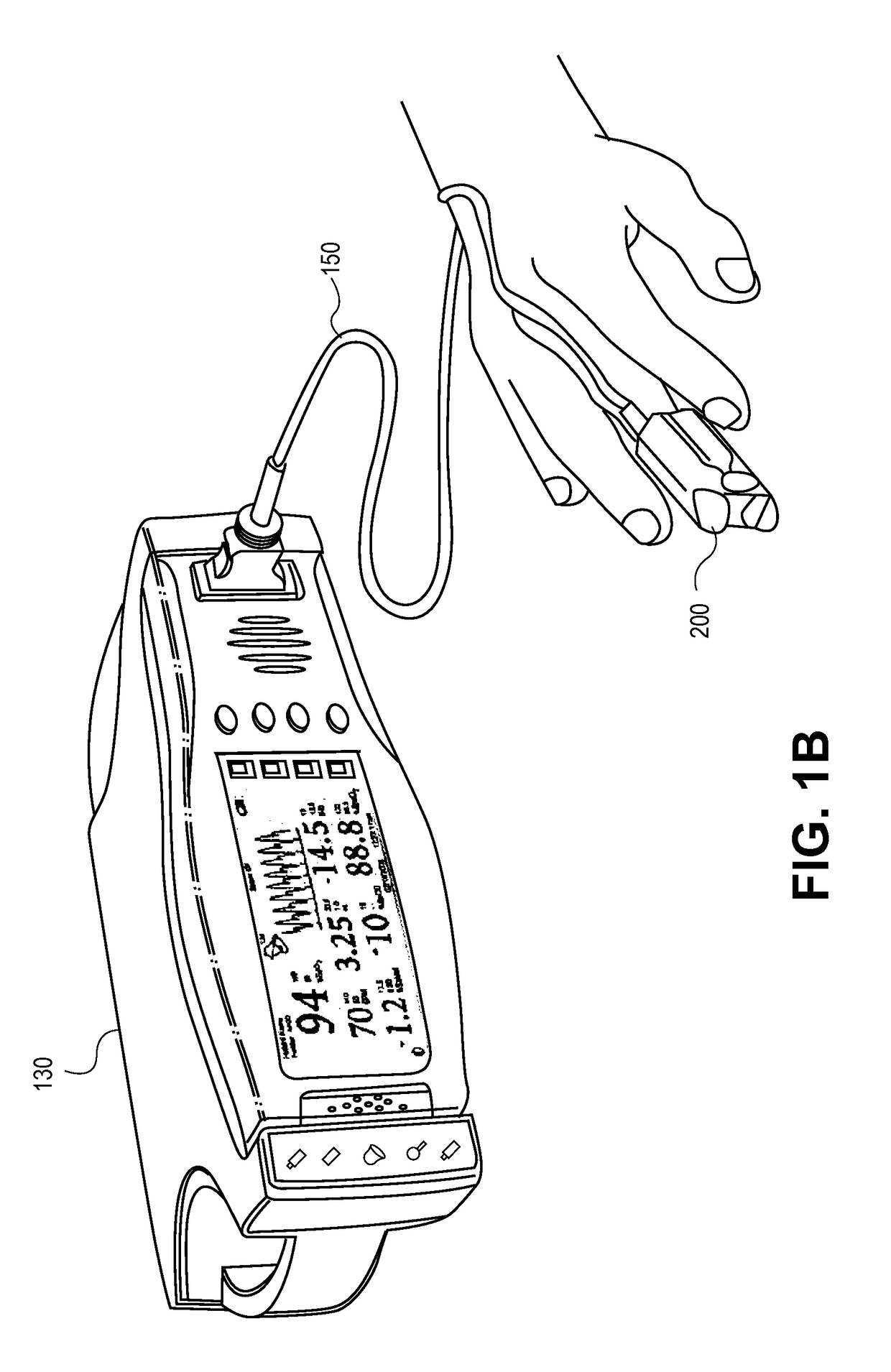Magnetic electrical connector for patient monitors
a technology of patient monitors and electrical connectors, applied in the field of patient monitoring devices, can solve the problems of affecting the performance of patient monitors, affecting the quality of patient monitors, and unreliable connections, and achieve the effect of convenient cleaning
- Summary
- Abstract
- Description
- Claims
- Application Information
AI Technical Summary
Benefits of technology
Problems solved by technology
Method used
Image
Examples
Embodiment Construction
[0024]The present disclosure is generally related to signal couplings. In an embodiment, in order to provide an electrical coupling with fewer exposed conductors, and which reduces the ingress of liquids and entrapment of biological materials, an isolation connection is provided utilizing inductance and a physical gap between the conductors of the coupling. In an embodiment, a variety of medical devices could utilize a signal isolation connection between, among other places a sensor or other component interacting with a patient's body and the main instrument. For example, a device designer could implement a signal isolation component between a pulse oximeter and pulse oximetry sensor, an electroencephalogram “EEG” and the EEG electrodes, an electrocardiograph “ECG” and the ECG electrodes, acoustic throat sensors and a respiratory monitor, a temperature probe and a thermometer, and other medical devices with elements that come into close contact with a patient's body.
[0025]FIGS. 1A-1...
PUM
 Login to View More
Login to View More Abstract
Description
Claims
Application Information
 Login to View More
Login to View More - R&D
- Intellectual Property
- Life Sciences
- Materials
- Tech Scout
- Unparalleled Data Quality
- Higher Quality Content
- 60% Fewer Hallucinations
Browse by: Latest US Patents, China's latest patents, Technical Efficacy Thesaurus, Application Domain, Technology Topic, Popular Technical Reports.
© 2025 PatSnap. All rights reserved.Legal|Privacy policy|Modern Slavery Act Transparency Statement|Sitemap|About US| Contact US: help@patsnap.com



